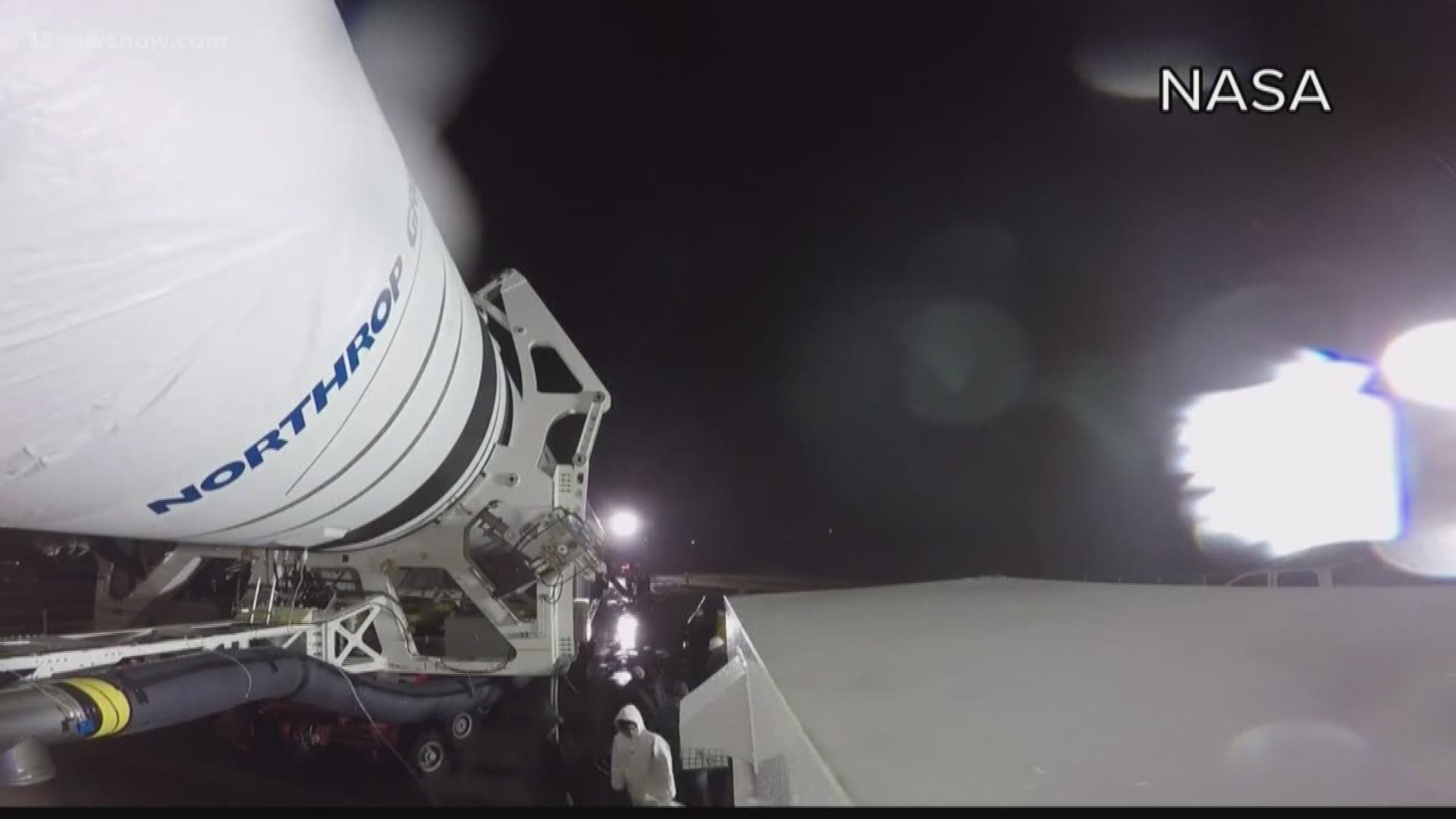WALLOPS ISLAND, Va. (WVEC) — Hundreds of people flocked to Virginia's Eastern Shore early Saturday, Nov. 17, to watch a sight unimaginable just two generations ago: a rocket blasting off to space.
An Antares rocket successfully launched from Wallops Flight Facility at 4:01 a.m. Saturday, the ninth successful launch since the Antares program came to Wallops in 2013.
Hundreds of people showed up the facility's visitors center to watch the launch. Bundled up against temperatures in the low 40s, dozens of people waited outside the center's gates even before the area was open.
"We were waiting in line in our car outside the gate," said Jennifer Soles of Arlington, Virginia. "It's just cooler to be here in person and to hear it and see more of it."
The launch was originally scheduled for Thursday morning, but was delayed due to bad weather. It was for the best — while rain and thick clouds held over Wallops Island on Thursday and Friday mornings, Saturday was clear and cool.
For many people in attendance, the launch was the first they had ever seen in person.
"I used to work for NASA at Langley," said Alan Stockwell of Newport News, Virginia. "I never saw a shuttle launch, and I figured it was time to see one up close."
Radio chatter implied there were telemetry issues, or problems with measurements from the instruments, just before the rocket was set to lift off.
Kurt Eberly, Antares vice president at Northrop Grumman, said the teams working on the launch ultimately were able to confirm that everything was safe, and the launch continued as normal.
"We had a smooth countdown," Eberly said. "We were able to launch right at the beginning of the launch window, and there was very little steering required."
The Cygnus is set to arrive at the International Space Station on Monday at 5:20 a.m. EST. It will be unloaded based on the priority of the cargo.
The Antares rocket served as the transport for a Cygnus spacecraft, which will reach the International Space Station in a few days. The Cygnus holds almost four tons of goods for those on the ISS, including 148 food containers (each holding several meals), clothing, toiletries and science experiments.
It will also bring aboard new technology, including a "refabricator," which allows those on the ISS to melt down and reuse plastic. The end goal is to reduce both the amount of plastic on the station and the number of spare parts that need to be sent up, increasing efficiency and saving money.
Other things on the Cygnus include experiments looking at how muscle tissue does in space, a project from the Michael J. Fox Foundation on a protein closely associated with the development of Parkinson's disease and a student project focused on self-healing concrete.
Those watching from the visitors center experienced a notable delay between when they could see the rocket lift off and when they heard the sound from it. When the roar came from the island, people cheered.
"That was probably the coolest thing ever," Sarah Walters, a 6-year-old from Silver Spring, Maryland, said. "I've met Santa, and (the launch) was probably cooler."
At a post-launch news conference, officials lauded all the teams who contributed on a successful launch. The next Antares launch is scheduled for April 17.
"This was a beautiful launch," Frank DeMauro, vice president of the Advanced Programs Division at Northrop Grumman, said. "We were able to put it exactly where we want it.
► Make it easy to keep up to date with more stories like this. Download the 13News Now App.

